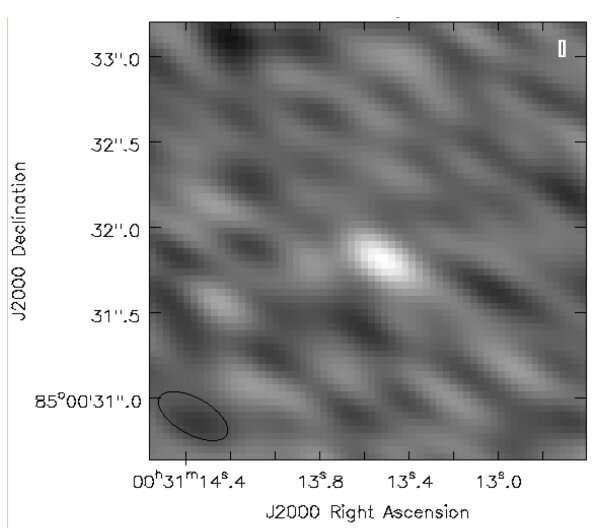Polarized optical emission from tidal disruption found to be caused by colliding streams of material from a star

A team of space scientists from Finland, Greece and the U.S. has found evidence showing that polarized optical emissions observed during a tidal disruption event were caused by colliding streams of material from a destroyed star. In their study, reported in the journal Science, the group analyzed data from a tidal disruption event in the WISEA galaxy.
Prior research has shown that if a black hole moves close enough to a star, the star can be stretched into long strands rather than falling in directly. Such actions are known as tidal disruption events (TDEs) and the strand material from the destroyed star tends to light up as it circles the black hole before falling in. In this new effort, the researchers sought to learn more about the source of a bright light from such a TDE strand. To that end, they obtained data from the Nordic Optical Telescope as it had captured a TDE in action and used software from the High Energy Astrophysics Science Archive Research Center to study it.
They were able to see that material left over from the TDE circled all the way around the black hole. They were also able to see that the material grew hotter due to energy from the encounter.
During their initial work, they found that optical polarization measurements surrounding the TDE varied during the event and peaked with a linear polarization degree of 25 ± 4%. They noted that such a high degree of polarization suggested the presence of a relativistic jet. But eight months later, no radio emissions were detected, which would not have been the case had the emissions been associated with a relativistic jet.
The team next compared their observations with models depicting interactions between black holes and stars. They report it was likely that as material left over from the TDE encircled the black hole, it ran into similar material that had gone around the black hole in the opposite direction and produced a shockwave—and that was the source of the high polarization they had observed.
More information:
I. Liodakis et al, Optical polarization from colliding stellar stream shocks in a tidal disruption event, Science (2023). DOI: 10.1126/science.abj9570
© 2023 Science X Network
Citation:
Polarized optical emission from tidal disruption found to be caused by colliding streams of material from a star (2023, May 14)
retrieved 14 May 2023
from https://phys.org/news/2023-05-polarized-optical-emission-tidal-disruption.html
This document is subject to copyright. Apart from any fair dealing for the purpose of private study or research, no
part may be reproduced without the written permission. The content is provided for information purposes only.
For all the latest Science News Click Here
For the latest news and updates, follow us on Google News.

